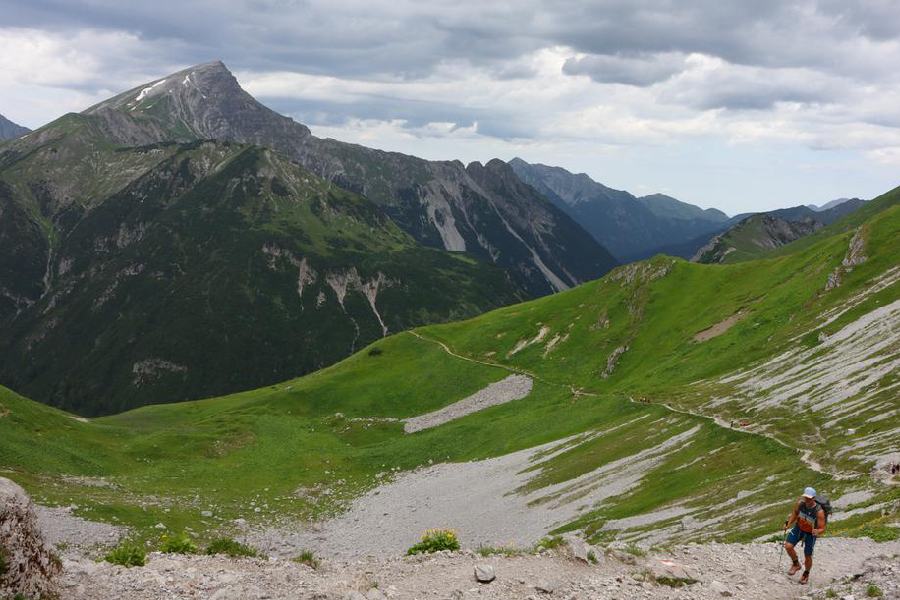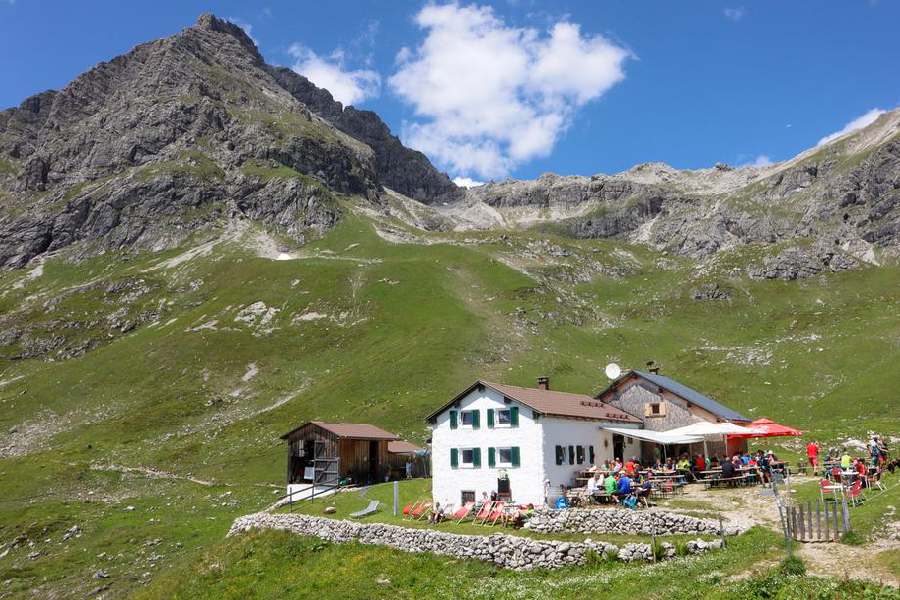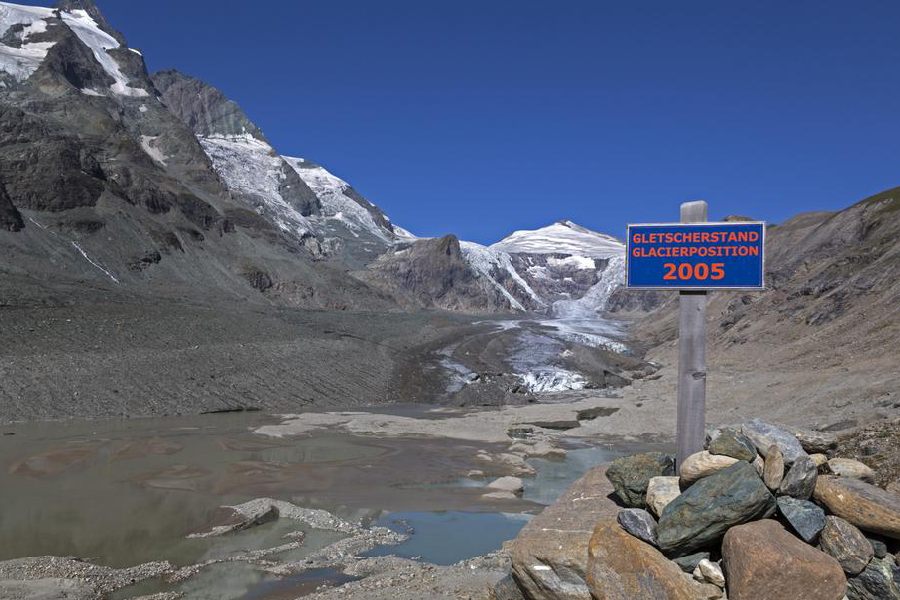On a July morning shortly before 9 a.m., my adventure of crossing the Alps began. Along with my father and a handful of other mountain sports enthusiasts, I traveled all the way to Wildental, Austria to take on the challenge.
Our hiking route would take us in stages through Tyrol to northern Italy over six days. Our final destination: The Italian spa town of Merano, known as the "Pearl of South Tyrol," which once enchanted Austria's Empress Sissi.
Our guide Ludwig Pittl, was a retired doctor with alert, blue eyes and a mischievous laugh. Luggi, as friends call him, hails from a village near Innsbruck and has been hiking since his youth.
With hiking boots laced up, water bottles filled and light daypacks on, we set out on the trail. The sun shone from a cloudless sky and the valley was awash in lush green hues. Freshly mown meadows and dark fir trees dominated the picture, while a mighty mountain range could be seen on the horizon.
The mood was exuberant, and I quickly struck up a conversation with the other participants. Many of them were retirees with hiking experience, while my father and I were mountain sport novices.
We turned onto a shady gravel path; the only sounds we heard were the rushing of the water, the crunching of small stones under the soles of our shoes, and occasional birdsong.

Ben Restle embarked on a six-day excursion across the Alps
Traffic jam on the mountain
But we didn't have this idyll to ourselves for long. We repeatedly encountered other hiking groups and excursionists, some on e-bikes.
A short time later, as we started the first ascent of our journey, we encountered a "traffic jam". Dozens of hobby hikers, many also under the supervision of a guide, were struggling up the pass. Given the narrow mountain trail and steep slopes, overtaking them was impossible.
At lunchtime, we finally reached a refuge at the foot of the Großer Widderstein mountain. The effort was worth it. From here, we were rewarded with a sweeping panoramic view of the Lechtal Alps and into the valley.
It was the perfect place to cool down with beverages and some snacks.

The Widdersteinhütte in Austria is located at about 2,000 meters above sea level
Climate change threatens mountain tourism
Yet, the future of such mountain refuges is increasingly uncertain. Climate chamge is to blame, according to Tobias Hipp of the German Alpine Society. Hipp is an expert when it comes to glaciers, climate change and nature conservation and has studied the effects of climate change on alpine permafrost.
The consequences of global warming can be seen "most blatantly in the European Alpine region," he said. The clearest example is glacier melt, "where we have seen extreme declines averaging 20, 30 meters (65-98 ft) every summer in the eastern Alps, i.e. in Austria and northern Italy."
Mountain glaciers are important water reservoirs. There will be serious consequences if they melt.
"Naturally, this has an impact on mountain huts and their water supply. Many springs in the high mountains are fed by the glacier, and we had a water shortage there," Hipp says. The problem is particularly visible at the Pasterze glacier, Austria's longest and largest glacier on the Glockner Group of the High Tauern mountain range.
But hiking trails and via ferratas are also threatened by climate change. Melting glaciers, for example, leave behind heaps of boulders that can lead to increased rockfall. This also threatens lower-lying hiking routes.
Equally dangerous is the continuous melting of permafrost, which holds rock formations together like cement. If it softens, massive landslides can happen — as recently ocurred on the Fluchthorn mountain on the border between Austria and Switzerland, when around one million cubic meters (35 million cubic feet) of rock broke off.
Certainly there have always been rockfalls and landslides. But global warming only seems to increase their intensity and frequency.
Friedl Knönauer, a passionate alpinist from German environmental protection association Bund Naturschutz in Bayern, suspects that in the future "certain hiking trails and via ferratas will no longer be able to be maintained in certain areas."
His approach is as pragmatic as it is fatalistic: "This climate warming brings changes, and we have to adapt." Knönauer thinks little of interfering with nature to make impassable routes passable again, by using, for example, suspension bridges. "You should let nature be nature," he says.

The consequences of climate change can be seen particularly clearly on Austria's Pasterze glacier
The final leg
On our hike, meanwhile, there was little to indicate the increased dangers of mountain tourism. Apart from a lone sign along the Merano High Trail that warned of falling rocks, it was easy to ignore the consequences of global warming on the alpine ecosystem and tourism.
The mood was euphoric on the last day of our six-day hiking trip, during which we walked 45 kilometers (27 miles) and also covered some distances by bus and taxi.
On the home stretch to Merano, we take on the technically difficult ascent of about 500 meters (1640 ft) which lasted a few hours, before reaching the Talbauer Inn, located at 1200 meters (3937 ft).
Exhausted and drenched in sweat, our group was overjoyed. We took in the sweeping view over Merano and into the Eschtal valley over cold drinks.
To end the trip, we took a cable car down to Merano's picturesque old town, where we rewarded ourselves for our exertions with a scoop of ice cream. We had made it.










